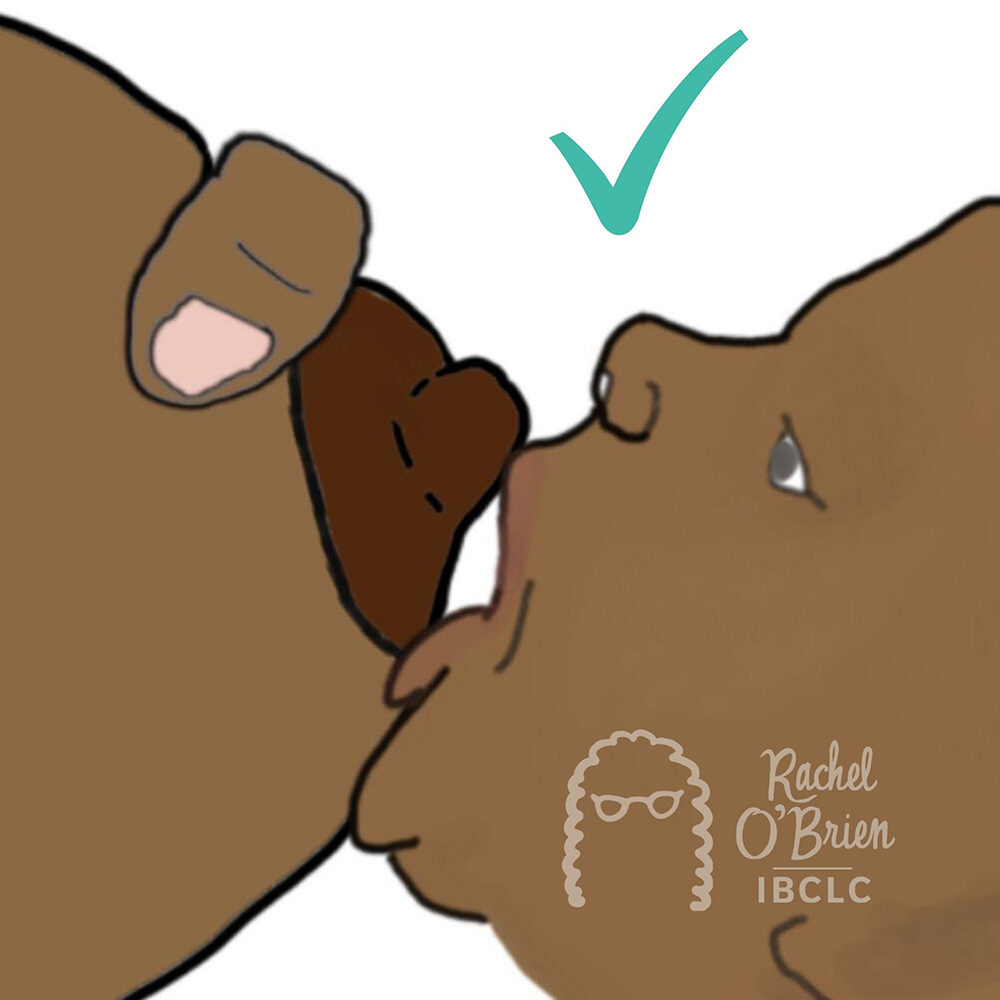
Welcome! This post will provide a simple step-by-step on weaning from the nipple shield. This can be done at any point and it is completely possible to teach baby to breastfeed directly without it even if they have been using the nipple shield from day 1. With a little skill work, practice, patience and grit – I can help you graduate from the Nipple Shield phase with confidence and pride!
First things first: *I highly recommend working with an IBCLC during this process, if possible.* I can even support families through virtual appointments and I am in-network with some insurances. Reach out via my book or contact page for those services.
This is a 10 tip-step-process hybrid: mostly in chronological order but not all steps/tips will apply to all people. Please read the whole list first and decide which tips apply to your family before you begin!
Step one: Weaning from the nipple shield can sometimes seem like a one step forward, two step back process. It can take as quickly as 2 weeks, but I have also seen it take a month or more. The details and circumstances are nuanced for every family which is why it can be important to work with an IBCLC to help investigate the “why” it is working with the shield but not as easily without. Depending on that answer the plan can be more tailored to support proper breastfeeding and solve the underlying issue. A nipple shield is a band-aid after all and it’s best to fix the root cause to properly move forward.
Step two: Skin-to-skin (and LOTS of it). Skin-to-skin is such a simple fix for so many common baby concerns. Nursing strike? skin-to-skin. Fussy baby? skin-to-skin. Weaning from a nipple shield and encouraging baby to latch directly at the breast? skin-to-skin! Why does it work? Because it is a “Reset Button” for baby. It helps rewire their brain and promotes those primal breastfeeding instincts to seek out the breast and latch/feed often. When baby is skin-to-skin they will practice those skills often which is necessary to relearn latching directly! (P.S I also recommend skin-to-skin in a warm bath with mom and baby. Wrap a small towel around baby so they aren’t as slippery and let baby root around, try to find the breast and latch. The warm water can relax everyone involved!)
Step three: Dream Feed! Watch the baby for early hunger cues while they are still sleeping. (Rapid Eye Movement, Wiggling, Smacking Lips, Fidgeting, etc). Try to latch baby without waking them during that state or when they are just barely awake. Heck, you can even try latching them while they are still asleep. Dream Feeds can be good practice and keep baby calm while they get the hang of doing all the work without that shield!
Step four: Nurse baby at least every two hours! A hungry, fussy baby will not be in the mood to practice or work harder at learning to breastfeed without the nipple shield. By keeping them satiated throughout the day they will be in a more calm state and ready to work with you! If it has been a long stretch between feeds and baby is impatient, latch with the shield and let them fill their stomach a bit before bringing them off for a burp mid-feed and removing the nipple shield. Quickly return them to the breast and they should latch on easily.
Step five: Hand express a few drops of breastmilk on to the nipple (or use pumped milk or formula, if you are using formula at all) to entice baby to latch more easily.
Step six: Talk gently to baby and encourage him or her. They have been listening to you since they were in utero, your calm voice is comforting and soothing. Even if latching is a bit bumpy in the beginning, stay positive and use a calm tone with baby. We want this to be a positive experience for everyone involved even if it is hard work at first. I’ve seen families who talk positively and calmly with their baby during this process have a more calm and successful experience!
Step seven: Use your hand to shape the breast into more of a mouthful using your thumb to gently press in at the top of your nipple to “point” the nipple up (view image below). Imagine baby is latching their moth onto your nipple like a coat on a hook. The nipple should point toward the roof of babys mouth. Align baby nose to nipple, gently rub your nipple across baby’s upper lip or nose which will encourage them to open wide, then with your hand at the nape of baby’s neck (NOT back of the head) guide baby toward the breast to latch on, bringing baby to breast not your breast down to baby. You should see baby take in a large amount of breast, feel no pain and see baby tuck their chin in deeply to your breast. We want to avoid baby having a shallow latch, or a latch that looks like their lips are pursed and they are sucking through a straw. You will often feel pain with a bad latch so when in doubt unlatch to avoid damage and try again!
Remember: if you or baby get upset, stop. Use the shield. Try again at the next feeding, or if you’re super frustrated, try again tomorrow. This can be a long process. If it was easy, you wouldn’t be reading this blog post, right?


